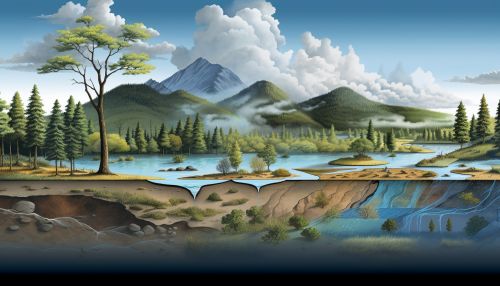The Science of Earths Hydrological Cycle and Water Resources
Introduction
The hydrological cycle, also known as the water cycle, describes the continuous movement of water on, above, and below the surface of the Earth. This complex system, driven by the energy from the sun and the force of gravity, is a fundamental concept in the fields of hydrology, meteorology, and environmental science. It plays a crucial role in the distribution of Earth's water resources and significantly influences our planet's climate and weather patterns.


Processes of the Hydrological Cycle
The hydrological cycle comprises several key processes, each contributing to the circulation of water through different parts of the system.
Evaporation
Evaporation is the process by which water changes from a liquid state to a gaseous state, known as water vapor. This transition occurs when the water's temperature increases, typically due to the heat from the sun.
Transpiration
Transpiration is the evaporation of water from plant surfaces, primarily through tiny openings in the leaves called stomata. This process is an essential part of the water cycle as it contributes a significant amount of water vapor to the atmosphere.
Condensation
Condensation is the process by which water vapor in the atmosphere cools and changes back into liquid water. This process forms clouds and is responsible for the formation of dew and frost on the ground.
Precipitation
Precipitation occurs when the condensed water particles in the clouds become too heavy and fall to the Earth's surface. This can occur in various forms, including rain, snow, sleet, and hail.
Runoff and Infiltration
Once precipitation reaches the Earth's surface, it either flows over the land as surface runoff, infiltrates into the soil to become groundwater, or is taken up by plants and transpired back into the atmosphere.
Water Resources
Water resources refer to the sources of water that are useful or potentially useful to humans. They include surface water, groundwater, and rainwater collected and stored by humans.
Surface Water
Surface water is water that is present on the Earth's surface, such as in rivers, lakes, and reservoirs. It is a critical resource for human activities, including drinking, irrigation, and industrial use.
Groundwater
Groundwater is water that infiltrates the soil and is stored in underground reservoirs known as aquifers. It is a crucial resource, especially in regions where surface water is scarce.
Rainwater Harvesting
Rainwater harvesting is the collection and storage of rainwater for reuse. It is an important strategy for water conservation, particularly in areas with limited water resources.
Impacts on the Environment and Human Society
The hydrological cycle and water resources have profound impacts on both the natural environment and human society. They influence climate patterns, support ecosystems, and are essential for human survival and development.
Climate Patterns
The hydrological cycle plays a significant role in shaping the Earth's climate patterns. It helps distribute heat around the planet and is a key component of the Earth's energy balance.
Ecosystem Support
Water resources support a wide variety of ecosystems, from freshwater habitats such as rivers and lakes to marine environments such as oceans and estuaries.
Human Survival and Development
Water is fundamental to human survival and development. It is essential for drinking, sanitation, agriculture, and industry. The availability and quality of water resources significantly influence human health and socioeconomic development.
